
|
Astronomy Picture Of the Day (APOD)
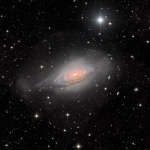 APOD: 2025 June 19 Б NGC 3521: Galaxy in a Bubble
APOD: 2025 June 19 Б NGC 3521: Galaxy in a Bubble
19.06.2025
Gorgeous spiral galaxy NGC 3521 is a mere 35 million light-years away, toward the northern springtime constellation Leo. Relatively bright in planet Earth's sky, NGC 3521 is easily visible in small telescopes but often overlooked by amateur imagers in favor of other Leo spiral galaxies, like M66 and M65.
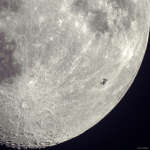 APOD: 2025 June 18 Б Space Station Silhouette on the Moon
APOD: 2025 June 18 Б Space Station Silhouette on the Moon
18.06.2025
What's that unusual spot on the Moon? It's the International Space Station. Using precise timing, the Earth-orbiting space platform was photographed in front of a partially lit gibbous Moon in 2019. The featured image was taken from Palo Alto, California, USA with an exposure time of only 1/667 of a second.
 APOD: 2025 June 17 Б Rosette Nebula Deep Field
APOD: 2025 June 17 Б Rosette Nebula Deep Field
17.06.2025
Can you find the Rosette Nebula? The red flowery-looking nebula just above the image center may seem a good choice, but that's not it. The famous Rosette Nebula is really located on the lower right, here colored blue and white, and connected to the other nebulas by gold-colored filaments.
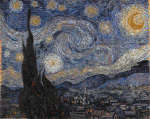 APOD: 2025 June 16 Б APOD is 30 Years Old Today
APOD: 2025 June 16 Б APOD is 30 Years Old Today
16.06.2025
APOD is 30 years old today. In celebration, today's picture uses past APODs as tiles arranged to create a single pixelated image that might remind you of one of the most well-known and evocative depictions of planet Earth's night sky.
 APOD: 2025 June 15 Б Two Worlds One Sun
APOD: 2025 June 15 Б Two Worlds One Sun
15.06.2025
How different does sunset appear from Mars than from Earth? For comparison, two images of our common star were taken at sunset, one from Earth and one from Mars. These images were scaled to have the same angular width and are featured here side-by-side.
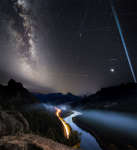 APOD: 2025 June 14 Б Meteors and Satellite Trails over the Limay River
APOD: 2025 June 14 Б Meteors and Satellite Trails over the Limay River
14.06.2025
What are all those streaks in the sky? A galaxy, many satellite trails, and a few meteors. First, far in the distance, the majestic band of our Milky Way Galaxy runs down the left. Mirroring it on the right are several parallel trails of Earth-orbiting Starlink satellites. Many fainter satellite trails also crisscross the image.
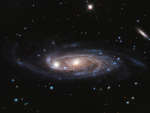 Rubin's Galaxy
Rubin's Galaxy
13.06.2025
In this Hubble Space Telescope image the bright, spiky stars lie in the foreground toward the heroic northern constellation Perseus and well within our own Milky Way galaxy. In sharp focus beyond is UGC 2885, a giant spiral galaxy about 232 million light-years distant.
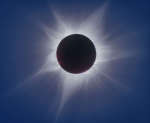 Solar Eclipse
Solar Eclipse
12.06.2025
On April 20, 2023 the shadow of a New Moon raced across planet Earth's southern hemisphere. When viewed along a narrow path that mostly avoided landfall, the Moon in silhouette created a hybrid solar eclipse.
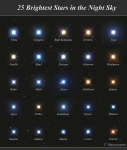 APOD: 2025 June 11 Б 25 Brightest Stars in the Night Sky
APOD: 2025 June 11 Б 25 Brightest Stars in the Night Sky
11.06.2025
Do you know the names of some of the brightest stars? It's likely that you do, even though some bright stars have names so old they date back to near the beginning of written language.
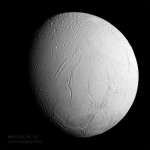 APOD: 2025 June 10 Б Enceladus in True Color
APOD: 2025 June 10 Б Enceladus in True Color
10.06.2025
Do oceans under the ice of Saturn's moon Enceladus contain life? A reason to think so involves long features -- some dubbed tiger stripes -- that are known to be spewing ice from the moon's icy interior into space.
|
January February March April May June July |
|||||||||||||||||||||||||||||||||||||||||||||||||